Custard apples are delicious fruits grown in tropical and subtropical regions worldwide. However, their delicate nature requires proper post-harvest management to maintain quality and extend shelf life. According to research, custard apples have a short shelf life of approximately 3-5 days when stored at room temperature.
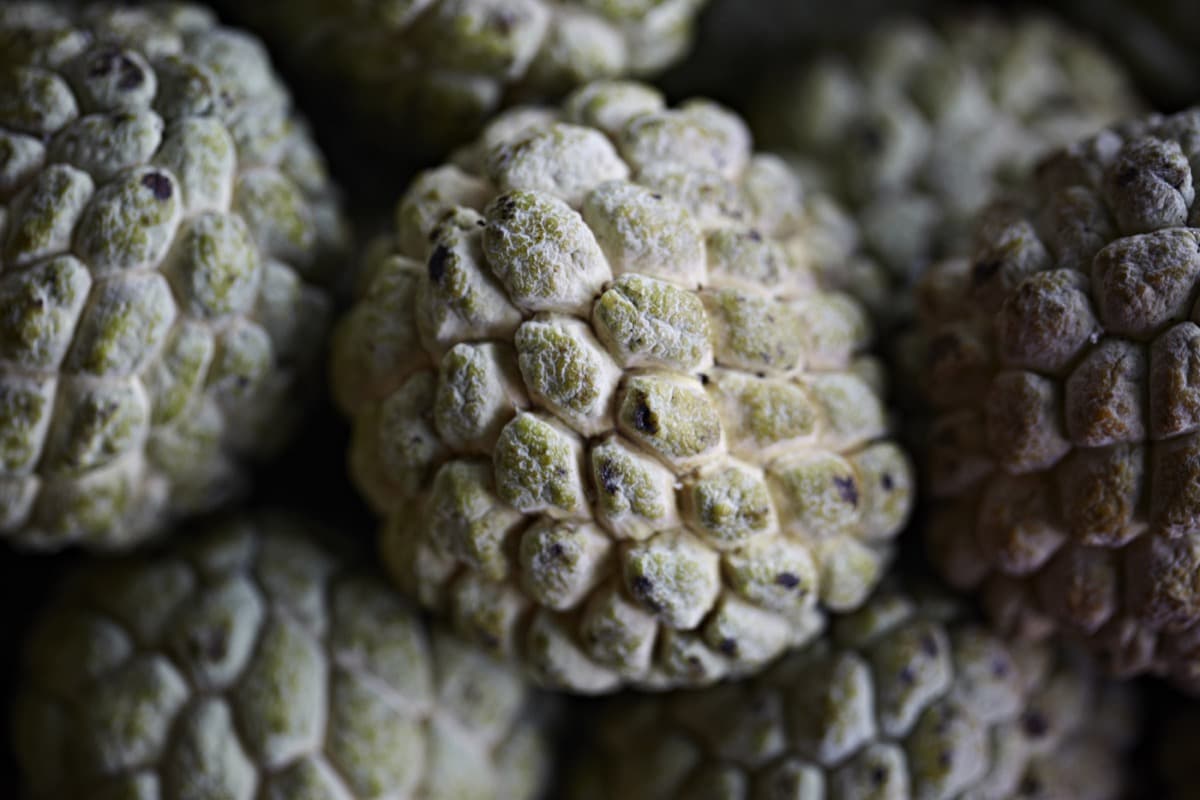
This means they must be carefully harvested, sorted, graded, and stored appropriately to reduce physiological damage and decay. Post-harvest treatments such as pre-cooling, ethylene treatment, and packaging techniques can also be used to maintain their freshness and quality. Proper post-harvest management is crucial for maximizing profits and providing consumers with high-quality custard apples.
Post Harvest Management for Custard Apples
Description of Custard Apples
The custard apple (Annona squamosa) is a small, well-branched tree or shrub from the Annonaceae family that produces edible fruits called sugar apples or sweetsops. It is widely cultivated due to its ability to tolerate a tropical lowland climate better than other related species, such as Annona reticulata and Annona cherimola. The tree can grow up to 8 meters tall and has branches with light brown bark and visible leaf scars.
Its thin, simple, alternate leaves are rounded at the base and pointed at the top, with a length of 5 to 17 centimeters and a width of 2 to 6 centimeters. The greenish-yellow flowers are solitary or in short lateral clusters of 2-4 and are pollinated by nitidulid beetles. The fruit is a round or heart-shaped greenish-yellow aggregate, 5 to 10 centimeters in diameter, with many rounded protuberances, and covered with a powdery bloom. The pulp is sweet and aromatic; the fruit contains numerous oblong, dark brown to black seeds.
Importance of Post-Harvest Management
- Proper post-harvest handling can reduce spoilage losses and increase the crop’s economic value.
- It involves a series of practices that begin immediately after harvest until the product reaches the consumer.
- Key components of post-harvest management include harvesting at the right stage of maturity, sorting, grading, cleaning, and packaging.
- Effective storage and transportation methods, such as temperature and humidity control, can also play a significant role in preserving the quality of custard apples.
- Post-harvest management can help extend the shelf life of custard apples, allowing for increased availability and reduced wastage.
- Improper post-harvest handling can lead to a decline in quality, increased susceptibility to pests and diseases, and, ultimately, lower market value.
In case you missed it: How this Farmer is Earning 24 Lakh from Custard Apple Cultivation: 4 Acres Farming Sucess Story
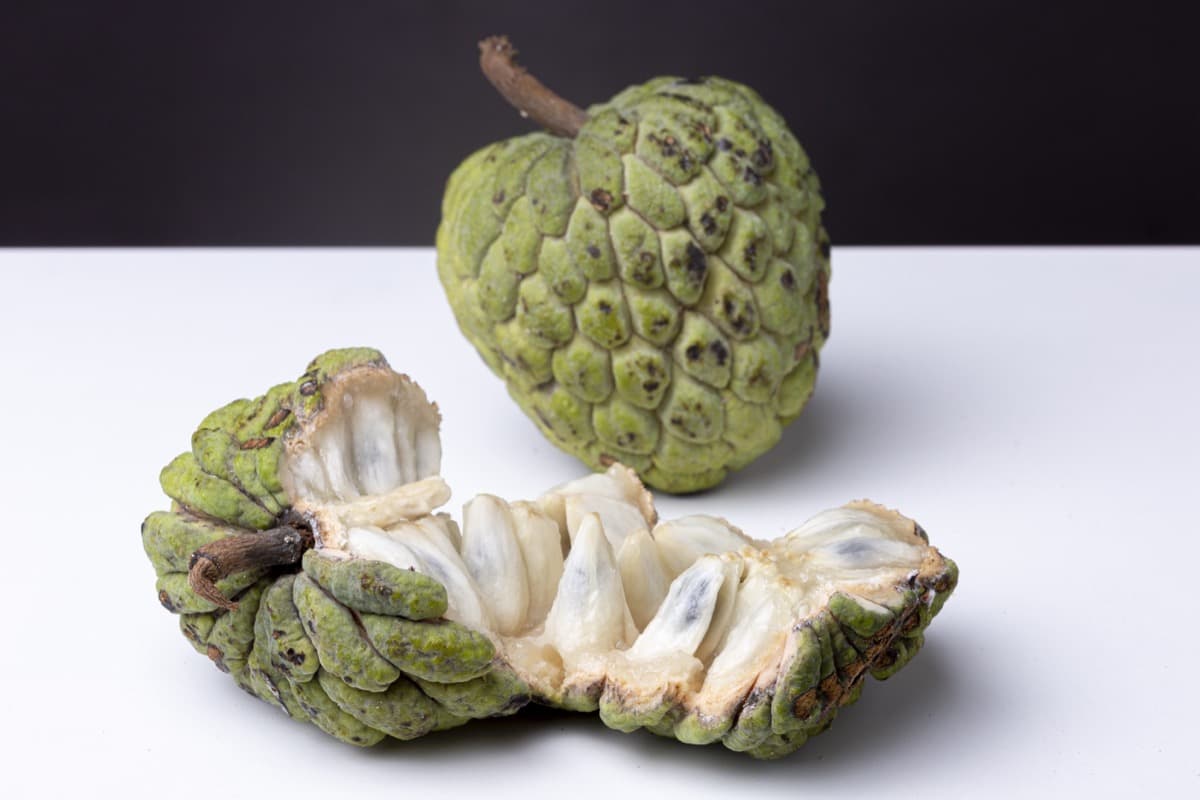
Factors Influencing Storability of Custard Apples
- The custard apple is a perishable fruit that needs proper storage conditions to maintain its quality and shelf life. Several factors influence the storability of custard apples, including temperature and chemical treatment.
- Temperature is a critical factor affecting the ripening and quality of custard apples. The fruit’s ideal storage temperature is between 15 and 20 °C, with low oxygen and ethylene tensions, 10% carbon dioxide, and a relative humidity of 85–90% in the storage atmosphere.
- Temperatures above 25 °C and below 15 °C can lead to fungal attacks and chilling injuries. Chemical changes in sugar apples stored at 26, 21, and 16 °C with 85-90% relative humidity were followed to determine the optimum storage and ripening conditions.
- The fruit weight loss was higher at higher storage temperatures than the fruits stored at lower storage temperatures. Results showed that the higher the temperature, the more rapidly the glucose, fructose, and sucrose concentration increase.
- Chemical treatment is another factor that affects the storability of custard apples. The custard apple pulp was treated with 1% of citric acid and 0.1% of sodium benzoate, and adding 50–100 ppm of sulfur dioxide checks the pink discoloration due to enzymic activity.
- Custard apple pulp treated with 100 ppm ascorbic acid as an anti-browning agent and packed in 200 gauge polyethylene was frozen at −25 °C in an alcohol bath and stored at −18 °C in a deep‐ freezer.
Harvesting Custard Apples
- The Custard apple is a climacteric fruit that reaches maturity when the fruit’s color changes from green to its varietal color shade. An indication of maturity is swallowing some apical buds, showing inner pulp.
- A tree that has been grown can yield more than 100 fruits, with each fruit weighing between 300 and 400 grams. The season of harvest is from August to October.
- Post-harvest handling is crucial for Custard apples. These fruits do not withstand cold storage as well as handling after ripening. Firm but mature fruits can be kept at 6 degrees Celsius for about a week. However, these fruits lose aroma and attractiveness and taste slightly bitter.
Sorting and Grading Custard Apples
- The size of custard apples can range from 100 grams to 800 grams, and fruits of similar size are grouped during sorting.
- The shape of custard apples can vary widely, but fruits with uniform shapes are preferred in the market.
- The color of the skin is an important quality attribute of custard apples. Fruits with a uniform and bright green color are considered more attractive to consumers.
- Quality attributes like texture, aroma, and sweetness are also considered during sorting and grading.
- Depending on the production scale, sorting and grading can be done manually or using automated machines.
- Automated sorting machines use computer vision technology to analyze and sort the fruits based on predefined criteria.
In case you missed it: Top 16 Steps to Boost Custard Apple Yield: How to Increase Fruit Size, Quality, and Production
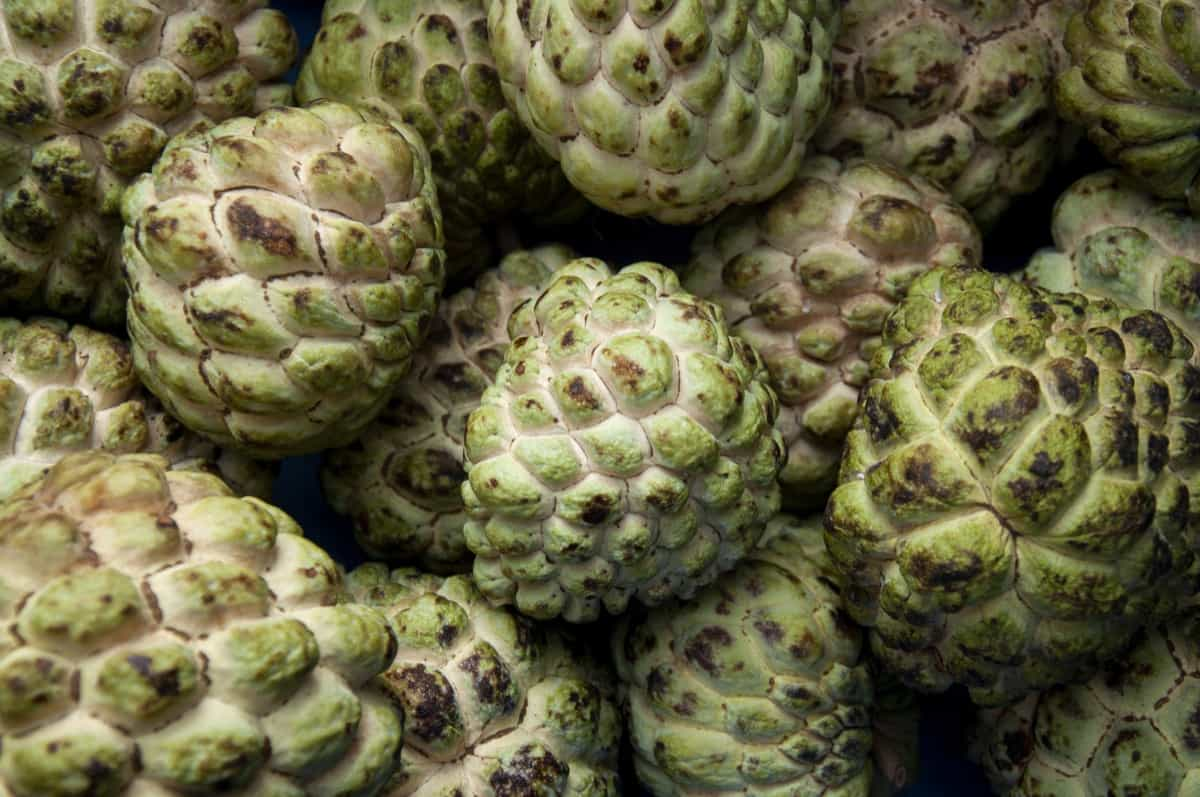
Post Harvest Value Addition in Custard Apple
The custard apple is a tropical fruit with many nutritional and therapeutic benefits. Value addition in custard apples can be achieved by preparing products such as jam, fruit-flavored yogurt, syrups, fruit drinks, and much more using fruit extracts from custard apples. Several studies have been conducted on the processing and value addition of custard apples, including the preparation of squash, nectar, juice, ice cream, milkshake, and vinegar.
To prepare juice, custard apple pulp can be extracted with a screw press, basket press, or simple hand pressing, and the juice is then strained through muslin cloth which is clarified by adding 1.4 gm of Poly Vinyl Pyrrolidone (PVP) per liter of juice. The juice is boiled with sugar and cooled, and 10g of sodium benzoate is added as a preservative.
Ice cream can be prepared by incorporating 15% custard apple pulp and 15% sugar level. It was observed that ice cream prepared with custard apple pulp had an overall acceptability score of 8.05 on the hedonic scale. The production cost and energy value per kg of custard apple ice cream were Rs. 61.42 and 97.27 Kcal/100 g, respectively.
The custard apple milkshake has the potential to capture popularity due to its therapeutic and nutritional benefits. The most acceptable custard apple milkshake was prepared from 90 parts of buffalo milk and ten parts of custard apple pulp, and it was ranked between “like very much” to “like extremely” on the hedonic scale.
Another study revealed that blending 35% custard apple pulp with cow milk (65%) resulted in the most acceptable milkshake. Vinegar can also be prepared from custard apple pulp, which takes around 30 days to prepare. Custard apple vinegar has physicochemical characteristics of 1.019 gm/ml specific gravity, 1% alcohol content, 5.39% (v/v) acetic acid, 2.0°Brix, and a pH of 2.8.
Post Harvest Treatments
Direct-to-Market Opportunities for Fresh Custard Apple
Fresh custard apples can be sold directly to the market by washing, sorting, and packaging in corrugated fiber boxes. Custard apples have a low shelf life of 4-5 days and must be sold immediately after harvesting. Plastic crates, bubble washers, and conveyor lines are eligible for matching grants.
Custard apples should be arranged in plastic crates to minimize physical damage, washed with a bubble washer, and treated with wax emulsion to increase shelf life. Sorting should be done manually, and fruits can be packed in small, corrugated fiberboard boxes or individually wrapped in 250-gauge poly film. Custard apples require reefer storage for transportation to distant markets, and pre-cooling through forced air cooling is recommended.
Optical sorters can be used to sort custard apples but are expensive machines. Selling custard apples during the off-season can fetch significantly high prices, but selling at spot market prices may be necessary if processing infrastructure is unavailable. Selling custard apple immediately after harvest requires no significant investment.
In case you missed it: Benefits of Zeolite in Aquaculture: Uses and Application Methods

Processing Custard Apple Pulp for Off-Season Sales
One way to make custard apple available during the offseason is to convert it into pulp, as the fruit is only available for 3-4 months a year and is not suitable for storage. A shed for civil construction, manual scooper, custard apple de-seeder, pulp collection tank, pulp cleaning table, continuous band sealer, blast freezer, and deep freezer are eligible for a matching grant to help with the pulping process.
The pulp is made by manually peeling the custard apple and using a scooper and de-seeder machine to separate the pulp from the seeds. The pulp is then cleaned, mixed with an anti-browning agent, packed in pouches, sealed, and frozen to -20°C. The frozen pulp can be stored for up to 6 months.
Farmers can sell custard apple pulp to ice cream manufacturers during the offseason for good margins. The byproducts of the business, such as custard apple skin and seeds, can be sold as manure and pesticide, respectively. Blast freezers require high investment, and any microbial infection can make the pulp unsaleable, leading to significant losses.
Custard Apple Processing and Value Addition
Custard apple pulp can be processed into powder form using a spray dryer or handheld sieve. The powder can be packed in polyethylene bags or bottles and sealed using an induction sealer for a longer shelf life. Custard apple powder is a premium product with increasing demand and higher margins, but branding and marketing investments may be required. Freeze drying is an advanced process with better quality but requires high investment. FPOs can sell the powder online or directly in cities, but the market is still small, with limited consumption.
Extracting Custard Apple Seed Oil for Cosmetics and Pesticidal Use
Custard apple seed oil can be extracted from the byproduct of custard apple pulp. This oil can be used as a biopesticide and in cosmetics for hair and skin applications. The process involves washing and sun drying the seeds before extracting the oil using a cold press machine. The extracted oil can then be filtered and packaged according to requirements.
One advantage of this process is that the input cost is negligible, resulting in high margins. However, direct B2C sales through online channels may only be challenging with significant investments in marketing. Additionally, utilization of cold press machines may be limited due to the limited quantity of seeds available to the FPO. Sun drying is cost-effective, but solar or electric dryers can also be used.
In case you missed it: Top 16 Steps to Boost Custard Apple Yield: How to Increase Fruit Size, Quality, and Production
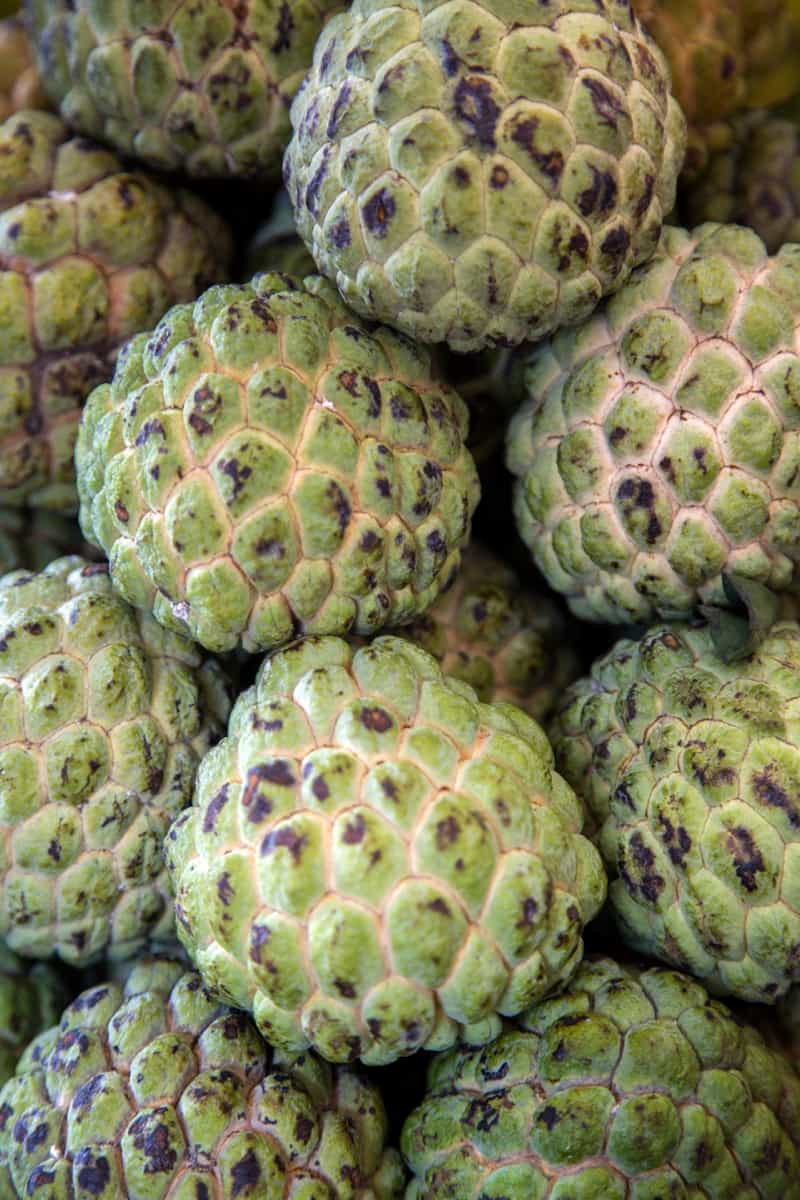
Market Preparation of Custard Apple
Custard apple is a fruit with a creamy and sweet taste that is popularly consumed as a dessert. It is a seasonal fruit available in Maharashtra from September to December. This fruit can be consumed as fresh or processed products such as ice creams and shakes. Several business opportunities are associated with custard apples, including direct marketing of fresh ones with basic value-added services such as washing, sorting, and packaging.
Custard apple pulp can be deseeded, deep-frozen, and sold during the off-season for further processing. It can also be further processed into powder through different drying methods. Oil extracted from custard apple seeds can also be used for cosmetic and pesticide purposes. Other potential business opportunities include freeze-dried custard apples, ice cream, and ready-to-serve drinks. However, these ventures may not be feasible for FPOs due to limited market potential and the high investments required.
Post Harvest Management of Custard Apple Enhanced Livelihood and Profits (Case Study)
- Custard apples were traditionally picked by women and children and transported to collection centers without proper knowledge of fruit maturity, plucking time, storage, grading, and packaging.
- This led to a significant loss of fruit mass during transportation. Moreover, women and children needed to be made aware of the maturity level of the fruits, resulting in the waste of many immature fruits.
- Several training programs were organized for collection centers covering post-harvest management techniques such as harvesting, grading, packing, storage, and record maintenance to address these issues.
- The tribes were informed that custard apple fruits are considered mature and ready for harvesting when the skin changes color, and the segments spread apart, exposing a creamy yellow skin.
- Using foam sheets for packing was the best method for the long-distance transportation of custard apples, resulting in a minimum loss in mass and hardness and no significant variation in color.
- Using appropriate packaging materials and marketing strategies, custard apples were successfully marketed in distant places like Udaipur, Sirohi, Pali, Jodhpur, Jaipur, and nearby states like Gujarat.
- These interventions significantly and sustainably impacted the livelihood and income of tribal communities in the region, as they could also market other minor forest produce. By adopting appropriate measures and interventions, the tribal region of Southern Rajasthan can convert itself into a progressive region.
In case you missed it: Profitable Horse Farming Business: 10 Essential Elements of a Successful Horse Breeding Business Plan
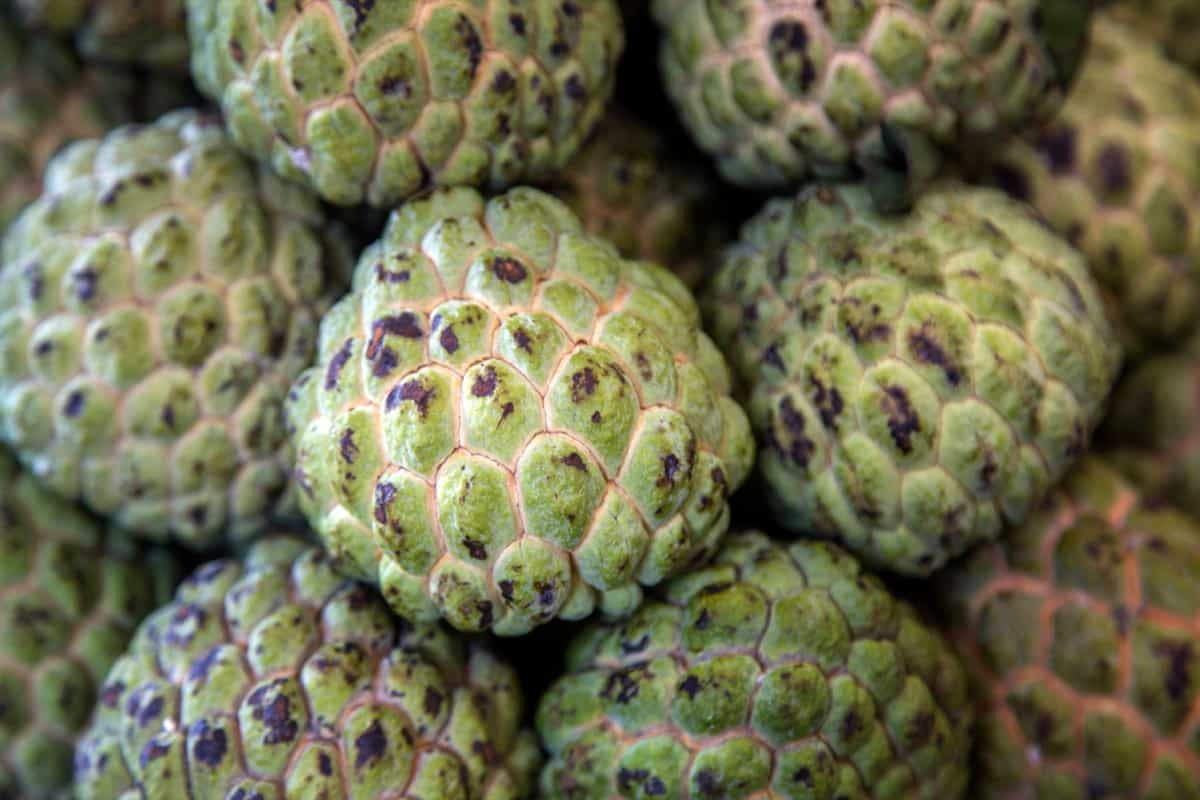
Conclusion
Effective post-harvest management is crucial for maximizing the value of custard apples. Proper handling, packaging, and transportation can increase shelf life and reduce losses. While there are some challenges, such as limited shelf life and the need for specialized equipment, there are opportunities for direct-to-market sales and value-added products.
- How to Build a Low-budget Goat Shed: Cheap Ideas and Tips
- Goat Farming Training Programs in India: A Beginner’s Guide
- Types of Pesticides Used in Agriculture: A Beginner’s Guide
- Economical Aquaculture: A Guide to Low-Budget Fish Farming
- 15 Common Planting Errors That Can Doom Your Fruit Trees
- How to Make Houseplants Bushy: Effective Tips and Ideas
- Innovative Strategies for Boosting Coconut Pollination and Yield
- Pollination Strategies for Maximum Pumpkin Yield
- The Complete Guide to Chicken Fattening: Strategies for Maximum Growth
- Natural Solutions for Tulip Problems: 100% Effective Remedies for Leaf and Bulb-Related Issues
- Revolutionizing Citrus Preservation: Towards a Healthier, Greener Future
- Natural Solutions for Peony Leaf and Flower Problems: 100% Effective Remedies
- Maximizing Profits with Avocado Contract Farming in India: A Comprehensive Guide
- Natural Solutions for Hydrangea Problems: 100% Effective Remedies for Leaf and Flowers
- The Ultimate Guide to Choosing the Perfect Foliage Friend: Bringing Life Indoors
- From Sunlight to Sustainability: 15 Ways to Use Solar Technology in Agriculture
- The Ultimate Guide to Dong Tao Chicken: Exploring from History to Raising
- The Eco-Friendly Makeover: How to Convert Your Unused Swimming Pool into a Fish Pond
- Mastering the Art of Delaware Chicken Farming: Essentials for Healthy Backyard Flocks
- 20 Best Homemade Fertilizers for Money Plant: DIY Recipes and Application Methods
- How to Craft a Comprehensive Free-Range Chicken Farming Business Plan
- Brighten Your Flock: Raising Easter Egger Chickens for Beauty and Bounty
- How to Optimize Your Poultry Egg Farm Business Plan with These Strategies
- Subsidy for Spirulina Cultivation: How Indian Government Schemes Encouraging Spirulina Farmers
- Ultimate Guide to Raising Dominique Chickens: Breeding, Feeding, Egg-Production, and Care
- Mastering the Art of Raising Jersey Giant Chickens: Care, Feeding, and More
- Ultimate Guide to Raising Legbar Chickens: Breeding, Farming Practices, Diet, Egg-Production
- How to Raise Welsummer Chickens: A Comprehensive Guide for Beginners
- How to Protect Indoor Plants in Winter: A Comprehensive Guide
- Ultimate Guide to Grow Bag Gardening: Tips, Tricks, and Planting Ideas for Urban Gardeners
- Guide to Lotus Cultivation: How to Propagate, Plant, Grow, Care, Cost, and Profit
- Agriculture Drone Subsidy Scheme: Government Kisan Subsidy, License, and How to Apply Online
- Ultimate Guide to Raising Araucana Chickens: Breed Profile, Farming Economics, Diet, and Care
- Bringing Hydroponics to Classroom: Importance, Benefits of Learning for School Students
- Ultimate Guide to Raising Polish Chickens: Breed Profile, Farming Economics, Diet, and Care
- Ultimate Guide to Raising Australorp Chickens: Profile, Farming Economics, Egg Production, Diet, and Care
At where is deseeding machine available pls provide information